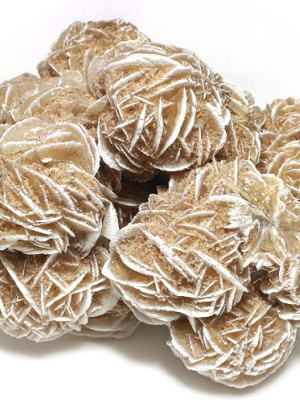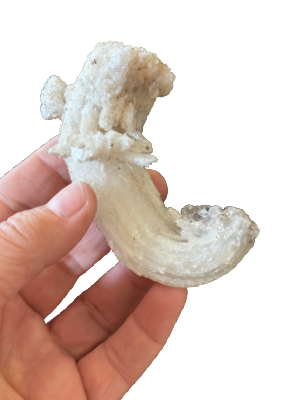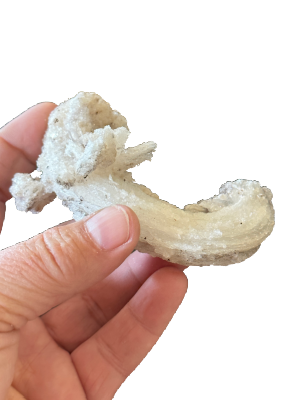Gypsum var. Ram's Horn Satin Spar

Gypsum is the second-softest mineral on Earth. It is a calcium sulfate dihydrate and is the most common sulfate mineral. Its name comes from the Greek word "gypsos" (meaning "chalk" or "plaster").
Gypsum is an evaporative rock and is a chemically sedimentary. Evaporate rocks are formed when lakes, rivers, oceans, and ground water evaporate leaving behind chemicals that were dissolved in them. It can form beds covering many square miles, White Sands New Mexico is one such place. All forms of gypsum will dissolve in water over time.



Selenite is a form of gypsum. There are many crystalline forms of selenite/gypsum. Sometimes they are grouped together under the name selenite. Clusters of tabulate crystals are called desert rose. Single flattened blades pick up particles of sand and are called hourglass selenite for the distinctive shape created by the sand. When gypsum forms clear and colorless crystals it is called selenite. When it is opaque with fibrous texture it is called satin spar.
Satin Spar forms when crystals fracture or when sheets of gypsum are penetrated by other crystals of gypsum. The gypsum crystals look long and fibrous. They can wind and twist as they grow forming what is known as "ram's head" selenite for the way it mimics a ram's horn.



CaSO4 · 2H2O
Composition Hydrous calcium sulfate
Color Colorless, white, gray, brown, beige, orange, pink, yellow, light red, green
Streak White
Hardness 2
Crystal System Monoclinic




